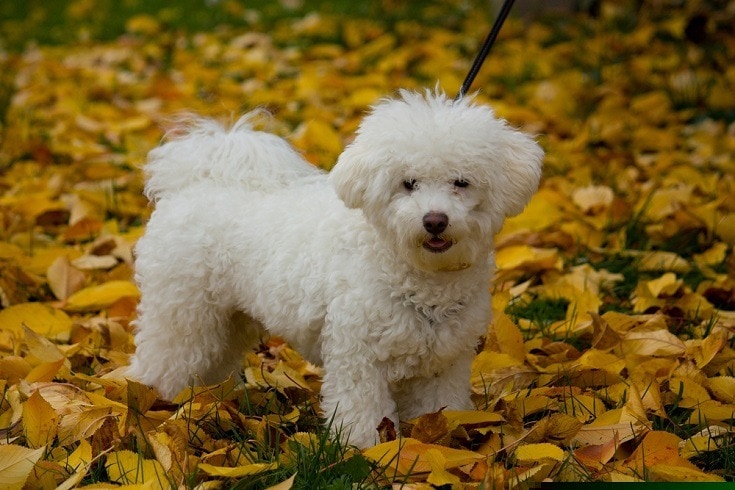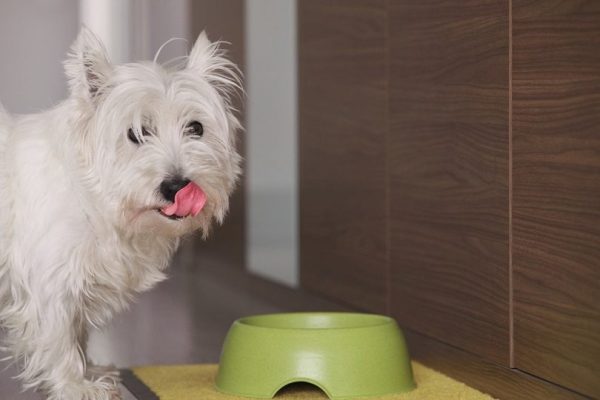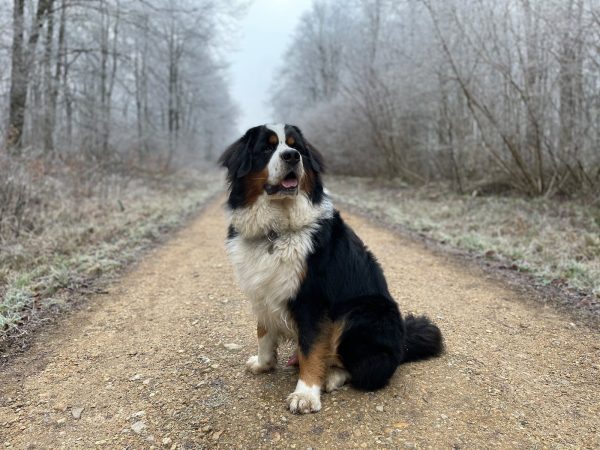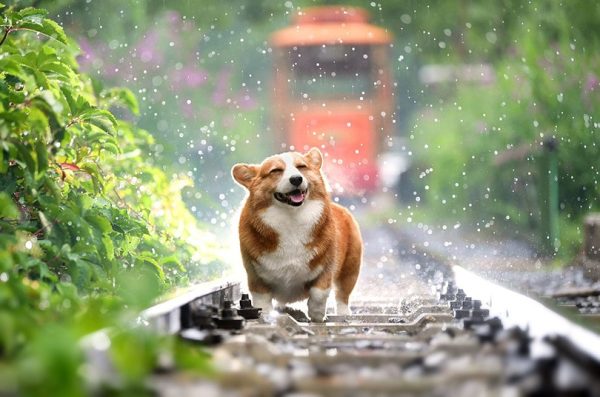In this article
View 8 More +The Bolognese dog is a small, white, fluffy dog that originally came from Italy. They’re known for being gentle and affectionate, making them great companion dogs. These dogs are very small, weighing less than 9 pounds (and often only a little more than 5).
Due to their soft, fluffy fur, they need regular brushing and combing to prevent matting. They also need to be bathed every few weeks, preferably with a shampoo designed for white coats.
Often, these dogs are adopted by families looking for a laid-back companion that doesn’t require tons of work.
Breed Overview
Height:
7 – 10 inches
Weight:
5.5 – 8.8 pounds
Lifespan:
12 – 14 years
Colors:
White
Suitable for:
Apartments and families with children
Temperament:
Affectionate, intelligent, gentle
While these dogs are rarer than many other small breeds, they can make great companion dogs for the right family. Despite their fluffy fur, they’re surprisingly low-maintenance. They also don’t need much exercise each day, making them better suited for more sedentary families.
Bolognese Characteristics

Bolognese Puppies
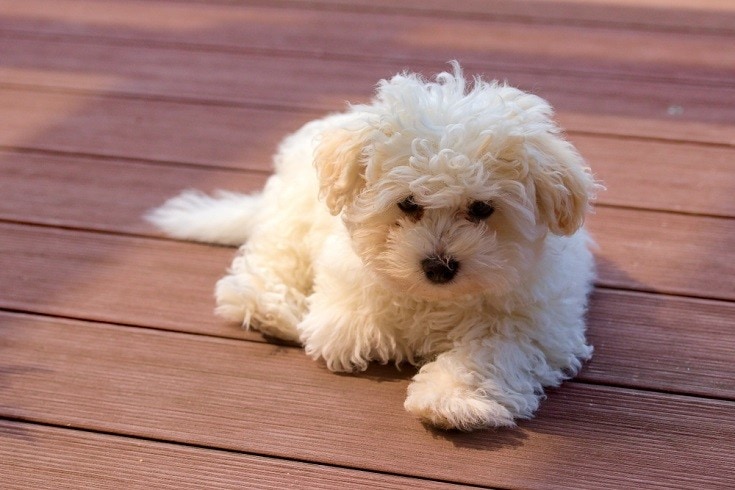
Bolognese puppies are absolutely adorable balls of fluff. They’re pretty easy to raise thanks to their eagerness to please and people-oriented nature. They often want to make their humans happy, making them easier to care for.
However, they can be a bit harder to find than other puppies. They aren’t very common, though there are a few breeders in the United States. The American Bolognese Club has a list of breeders who may or may not have puppies available. Use their list as a starting point for finding a breeder who prioritizes ethical breeding practices. Litters for this breed can be small, so expect to go on a waiting list.
These dogs aren’t commonly found at rescues or shelters due to their rarity. The only way most people can find them is through a qualified breeder.
Bolognese Origin & History
Despite their name, these dogs did not originate from the city of Bologna. Their exact origin is unclear, but they likely developed in central or northern Italy during the medieval period. Some theories suggest that they may be descendants of the Bichon Frise or Maltese dog. Both of these ancient breeds had similar white coats.
Artistic depictions of this breed appear in many Renaissance paintings from the 16th century, so we can guess that they existed during that era. Today, the breed is relatively rare. They’re found primarily in Italy today, where they came from.
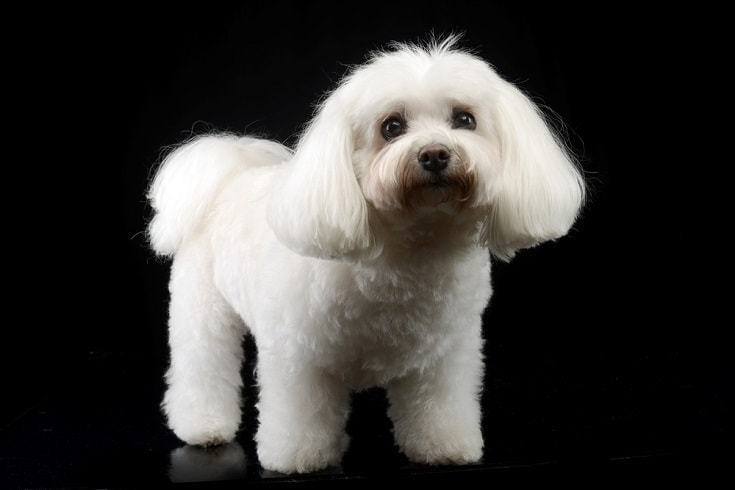
Temperament & Intelligence of the Bolognese 🧠
The Bolognese breed is renowned for its affectionate, gentle nature. They’re very calm and loving. They don’t exhibit much aggression and are generally friendly towards people of all ages.
This breed also thrives on human companionship. They form strong bonds with their families, and they need plenty of attention each day. They can be prone to separation anxiety if not taught how to be alone from a young age. The Bolognese wasn’t bred for its intelligence. However, they are very eager to please and receptive to training.
Are These Dogs Good for Families? 👪
Bolognese dogs can be a good fit for families. However, there are several factors you need to consider before deciding to adopt one.
Their very small size prevents us from recommending them to families with very young children, as they can be accidentally injured through rough play. Their bones are delicate, and they can be easily injured by falls or rough handling. They don’t do well in environments where they will be left alone for long periods, either. They can become anxious if they don’t receive enough attention.
They also have pretty high grooming needs. They must be regularly brushed and may even need professional grooming. While they’re low-maintenance in other ways, this added grooming is another responsibility you’ll need to make time for.
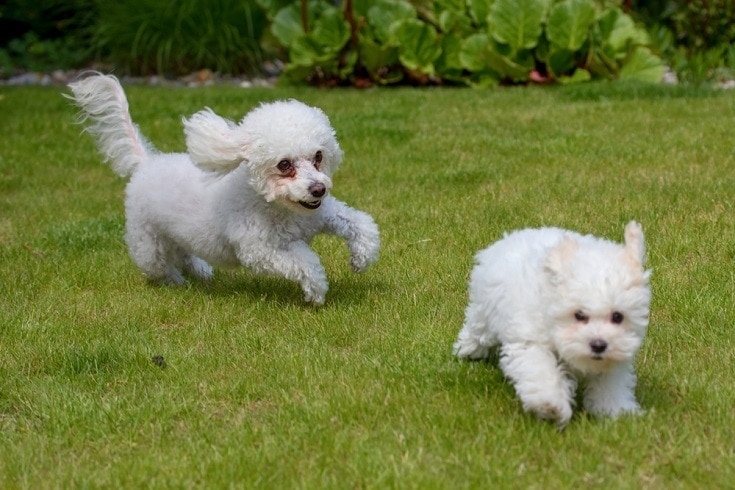
Does This Breed Get Along with Other Pets? 🐶 😽
The Bolognese is known for getting along with other pets, especially when properly socialized from a young age. They’re very friendly and social, making them receptive to interacting with other dogs. Their calm temperament also helps prevent aggression against other animals.
This breed can adapt easily to living with other types of pets, including dogs and cats. When socialized, they can even get along well with rabbits. While they are generally friendly, we can not emphasize the need for socialization enough. Early socialization teaches your dog social skills and prevents them from being fearful around other pets. A dog that isn’t exposed enough can develop fear-based aggression, even if they are from a friendlier breed.

Things to Know When Owning a Bolognese
Food & Diet Requirements 🦴
The Bolognese thrive on a balanced diet, similar to other dog breeds. However, due to their smaller size, food designed for a smaller dog is helpful. Otherwise, their mouth may be too small for the kibble, making eating challenging. Even with wet food, the portion sizes may be far too large unless you buy food packaged for tiny dogs.
Puppies also need specialized food. They require different calories and nutrients to grow, and specialized puppy formulas include these added nutrients. When your dog is older, you can change them to an adult formula. Otherwise, the added calories may increase their chance of obesity.
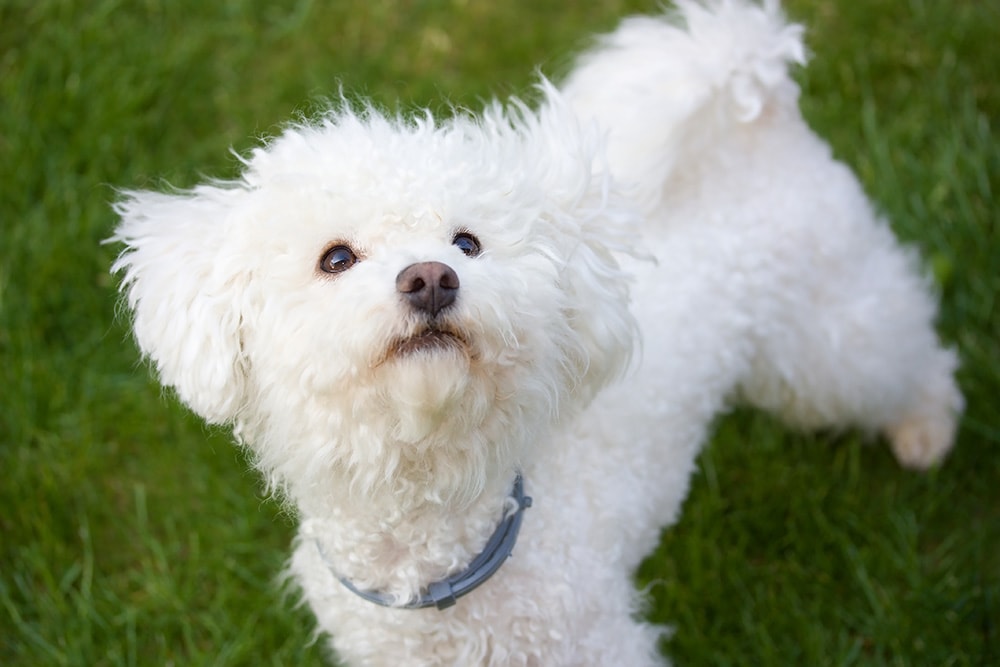
Exercise 🐕
Bolognese dogs do not need much exercise. However, that doesn’t mean they can get away without any exercise. They require a short walk each day, totaling around 30 minutes of exercise. You can also divide this time into shorter sessions if you’d like. For instance, you can take two 15-minute walks instead of a longer 30-minute one.
Playtime also counts as exercise. These dogs often love to play fetch and with puzzle toys, so plan on setting aside some time to play each day, too. Due to their smaller size, indoor play is often possible. Try playing tug-of-war, for instance, or fetch down a long hallway.
Puppies have developing bones and joints. Therefore, you should avoid strenuous activity. Otherwise, you could put a strain on their developing joints, leading to injury. Opt for gentle walks and laidback playtime. As they age, their activity levels may decrease naturally.
Training 🎾
Bolognese dogs are often easy to train, largely due to their people-oriented nature. They want to make you happy, and they have enough intelligence to pick up on commands relatively quickly.
Use positive reinforcement training to reward them for desired behaviors. Most of these dogs love treats and attention, so use that to your advantage. Always be consistent, using clear cues and rewards for positive actions. While these dogs are quick learners, they aren’t the smartest or most obedient dogs. Therefore, it’s still important to be patient. Mastering new commands takes time, and it’s important to keep this in the back of your mind while training.
Keep sessions short and engaging. These dogs have fairly short attention spans, so implement several sessions throughout the day instead of one long session. Always end on a positive note so that your dog looks forward to the next session and doesn’t come to dread them.
Consider enrolling your dog in puppy classes to get a head start on your training and provide supervised socialization.

Grooming ✂️
Bolognese dogs have white, cotton-like coats that require regular maintenance. Otherwise, they can become dirty and tangled. Brush your dog at least two to three times a week. A pin brush and a metal comb often work best. Your main goal is to remove loose fur, prevent tangles, and distribute natural oils through their coat. Ensure you brush their whole coat thoroughly, using the smaller comb to reach smaller areas. Under the legs and behind the ears tend to get matted the easiest.
These dogs also need to be bathed every month, which is much more often than most breeds. Otherwise, they won’t look so white anymore. Use a gentle dog shampoo and avoid bathing them any more than recommended, as this can irritate their skin.
Like all dogs, you’ll also need to trim their nails regularly. Otherwise, they will become too long and get uncomfortable. You can use nail clippers or a grinder designed for dogs at home or have a professional groomer accomplish this.
Check and clean their ears regularly, too. A damp cloth and gentle ear cleaner are often enough. Never shove anything into your dog’s ears, as this can cause damage to their internal ear structure. If you notice any signs of infection, like redness, contact your vet right away.
Brush your dog’s teeth regularly, aiming for at least a few days a week. Dogs are very prone to dental issues, with most dogs over 3 years having some dental problem. Preventing this is easily done with tooth brushing.
Health and Conditions 🏥
Luckily, Bolognese dogs are pretty healthy. They have a long lifespan and don’t tend to have health issues. However, like any dog, they can still get certain health issues.
Patellar luxation is one of the most common conditions. It occurs when the kneecap slips out of place. Over time, this can cause lameness and pain. Dogs may develop arthritis-like symptoms. Cataracts and progressive retinal atrophy can both affect Bolognese dogs, too. Early detection and treatment can be helpful, but these conditions aren’t always curable.
Bolognese dogs can also develop allergies. They can become allergic to something in their food or something in their environment. Either way, their symptoms usually manifest as itchiness and scratching.
Maintaining your dog’s health is important. Schedule regular checkups to stay on top of vaccinations and catch any potential health problems early. It’s also important to provide your dog with a balanced diet and regular exercise. Otherwise, they may develop conditions more readily.
- Cataracts
- Allergies
- Patellar luxation
- Progressive retinal atrophy
- Dental problems

Male vs. Female
The males and females of this breed do not have many differences. Because they are so small, the size difference commonly found between genders isn’t noticeable. Males may be slightly bigger than females, but not in a noticeable way to the naked eye.
There are no temperament differences between males and females. Some behavioral differences may occur if your dog isn’t spayed or neutered. For instance, intact males may be more likely to mark around the house.
That said, both sexes tend to lose these behavioral differences when they are spayed or neutered. Therefore, if you want to prevent these (often problematic behaviors), spaying and neutering are recommended.
3 Little-Known Facts About the Bolognese
1. Despite their name, they aren’t from Bologna
Most people assume these dogs are from Bologna due to their name. However, this isn’t the case. Their exact origins occurred long ago, so we don’t know much about their history until recently. They are believed to have developed somewhere in central or northern Italy, probably during the medieval period.
2. They may have descended from royalty
Due to their ancient origin, there are many theories regarding where these dogs came from. Some theories have suggested that they descended from ancient Roman lap dogs, which were often favored by nobility. They continued to be popular with wealthy families through the medieval period.
3. While they’re currently rare, they are increasing in popularity
These canines are not very popular, but they are slowly gaining in popularity due to their calm and affectionate nature. They can make great lap dogs, making them a great option for those looking for a companion animal.


Final Thoughts
Bolognese dogs were bred to be companions. Therefore, they have many traits people look for in companion dogs—gentleness, affection, and playfulness. They’re very calm and friendly, allowing them to get along with just about anyone. They also have a low exercise need and take well to training, making them good for first-time dog owners.
All that said, these dogs do require some grooming to maintain their white, fluffy coat. You have to bathe them more often than other dogs, and they must be brushed a few times a week.
Ensure you have enough time to groom and socialize these dogs before trying to adopt one. You should also plan on waiting for a puppy for some time, as these dogs are still fairly rare.
Featured Image Credit: islavicek, Shutterstock
